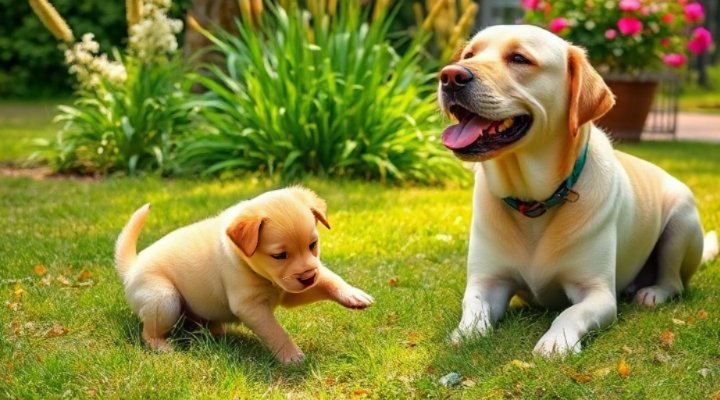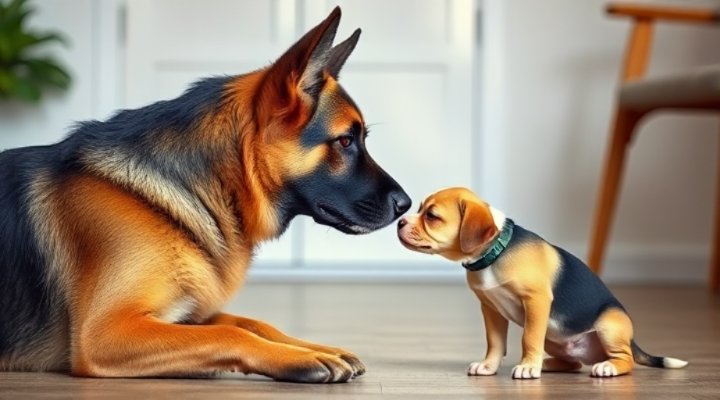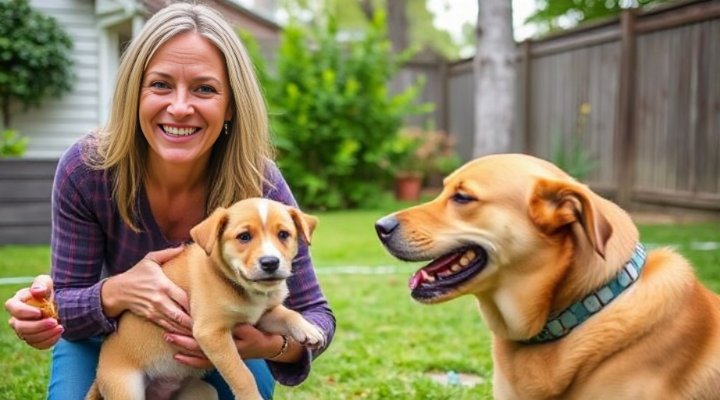Bringing a new puppy into a home with an adult dog can be both exciting and nerve-wracking. The key to success lies in careful planning, patience, and understanding canine behavior. In this comprehensive guide, we’ll walk you through the process of introducing a puppy to an adult dog and creating a harmonious living environment for both.
Understanding Canine Dynamics
Before introducing your puppy to your adult dog, it’s crucial to understand how dogs typically interact. Adult dogs may view puppies differently than they do other adult dogs. Puppies are often given more leeway when it comes to behavior, but this isn’t always the case. Some adult dogs may be less tolerant of a puppy’s boundless energy.

The First Introduction
The initial meeting between your puppy and adult dog sets the tone for their future relationship. Choose a neutral location for their first encounter, such as a park or a friend’s yard. Keep both dogs on leashes but allow enough slack for them to move naturally. Watch for positive signs like relaxed body language and gentle sniffing.
For more detailed guidance on dog introductions, check out our article on finding professional help for behavior issues.

Creating a Peaceful Home Environment
Separate Spaces
Initially, provide separate spaces for your puppy and adult dog. This gives your older dog a retreat when they need a break from the puppy’s energy. Consider using baby gates or separate rooms to create boundaries.
Feeding Arrangements
Feed your dogs separately to prevent resource guarding. The right crate can be helpful for creating safe feeding spaces.

Building Positive Associations
Help your dogs associate each other with good things by:
- Giving treats when they’re calm around each other
- Taking them on walks together
- Playing with them simultaneously (but separately at first)
The American Kennel Club offers excellent resources on dog introductions that align with these strategies.
Supervised Playtime
Gradually increase supervised interactions between your puppy and adult dog. Watch for appropriate play behavior – gentle mouthing, play bows, and taking turns chasing. Step in if play becomes too rough or if either dog seems stressed.

Training for Harmony
Basic obedience training helps establish you as the leader and creates structure. Teach both dogs commands like “sit,” “stay,” and “leave it.” Our guide on puppy obedience training can help with this process.
Remember that puppies have shorter attention spans, so keep training sessions brief and fun for them, while still challenging your adult dog.

Patience is Key
Building a strong relationship between your puppy and adult dog takes time. Some pairs bond quickly, while others may take weeks or months to become comfortable with each other. Celebrate small victories and don’t rush the process.
For persistent issues, consider consulting a professional through our dog behaviorist services.
Long-Term Success
As your puppy grows, continue to monitor their interactions with your adult dog. Adolescence can bring new challenges as the puppy tests boundaries. Maintain consistent rules and training for both dogs to preserve household harmony.
The ASPCA provides additional scientific resources on multi-dog households that can supplement your efforts.
By following these strategies, you’ll be well on your way to creating a peaceful, happy home where your puppy and adult dog can thrive together. Remember that every dog is unique, so be prepared to adjust your approach based on your pets’ individual personalities and needs.
Related Keywords: puppy and adult dog training, introducing new puppy to resident dog, dog behavior modification, multi-dog household tips, puppy socialization with adult dogs

